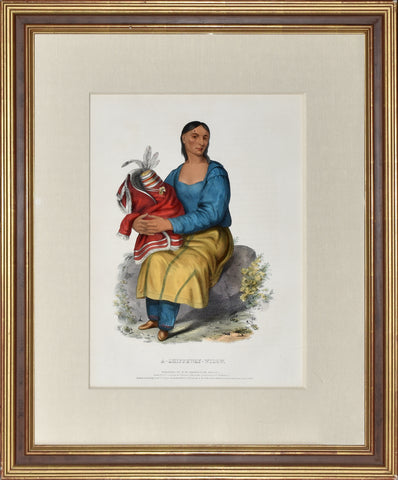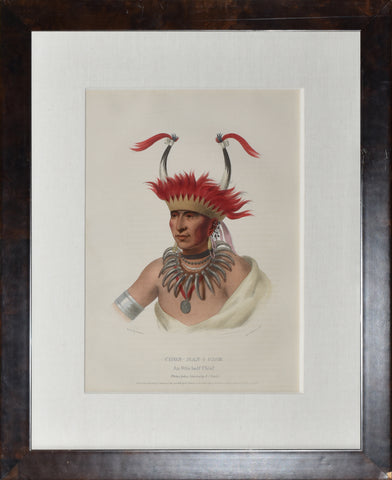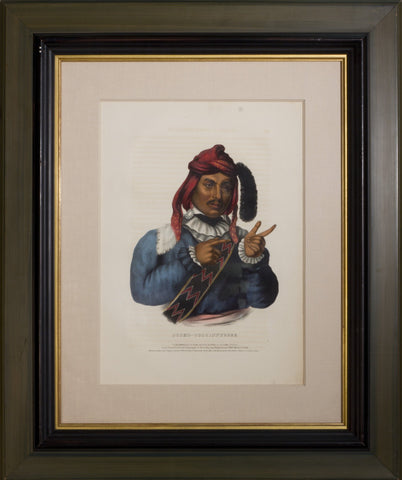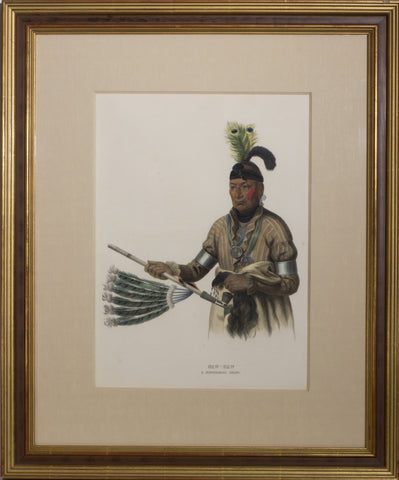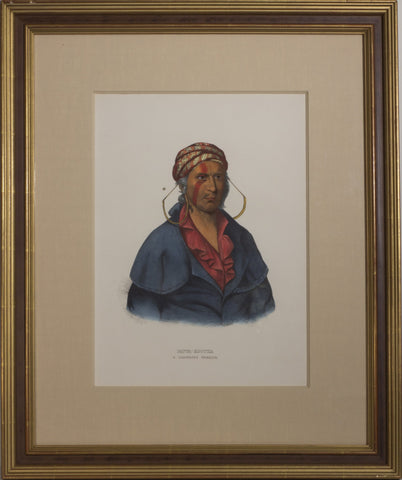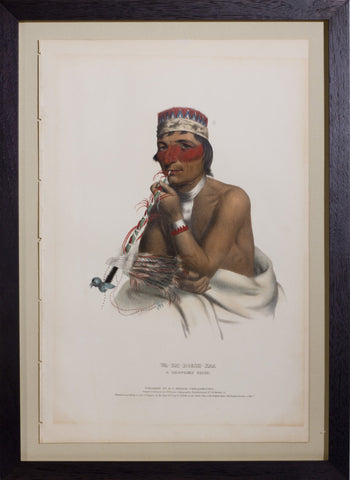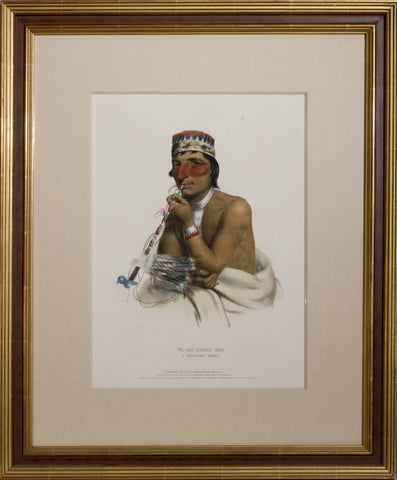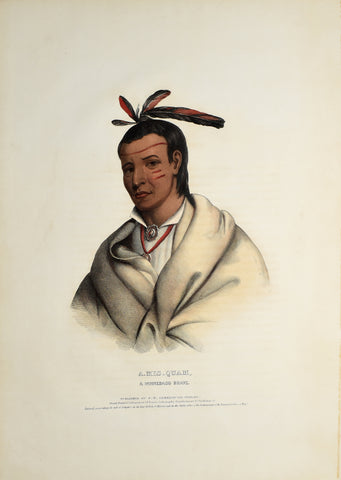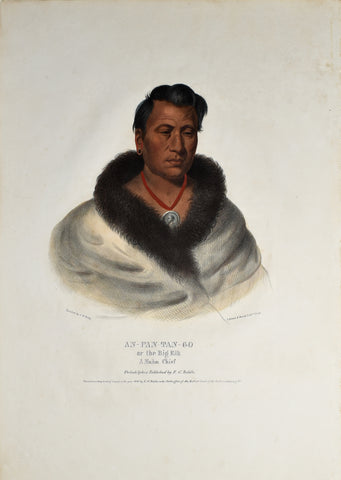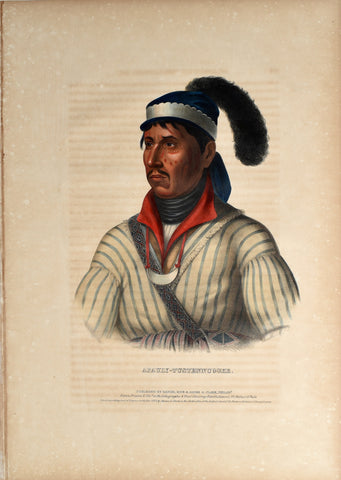Search By Artist
Thomas L. McKenney (1785-1859) and James Hall (1793-1868)
History of the Indian Tribes of North America.
Philadelphia: Frederick W. Greenough; Daniel Rice & James G. Clark, 1838-1842-1844.
Lithographs with original hand-coloring
Soon after Thomas L. McKenney was appointed Superintendent of Indian Trade in 1816, he struck upon the idea of creating an archive to preserve the artifacts, implements, and history of the Native Americans. The Archives of the American Indian became the first national collection in Washington and were curated with great care by McKenney through his tenure as Superintendent and also when he served as the first head of the Bureau of Indian Affairs beginning in 1824. Artist Charles Bird King arrived in town in 1822 and, during a visit to his studio, McKenney was inspired to add portraits to the archives. King would, for the following twenty years, capture many of the visiting Indian dignitaries, as well as make copies of watercolors created in the field by the less able James Otto Lewis. Many saw the great value in preserving what was already known to be a vanishing race, but others in government criticized the expenses incurred. The visiting Indian delegations who had come to Washington to meet with the "Great Father" (their name for the president) would inevitably tour the Indian gallery, which was housed in the War Department building, and were generally impressed, many requesting that their portrait be painted and added to the collection. This seemed to help smooth relations during the often tense treaty negotiations.
McKenney was preparing to publish a collection of the Indian portraits when he lost his position at the Bureau during Andrew Jackson's house cleaning in 1830. This seemed like an omen, as many other setbacks befell the project: publishers went bankrupt, investors dropped out, historical information became unobtainable, and expenses soared. McKenney finally enlisted Ohio jurist and writer James Hall to assist with the project, making him a partner. Hall was able to complete the individual biographies of each subject and put the finishing touches on the general history. Six years passed between the original prospectus and the issue of the first part. In that time, James Otto Lewis, who was likely bitter that he would receive no credit for the King-reworked portraits that he sent to the Archives, beat McKenney to the market with his own Aboriginal Port-Folio in 1835. Unfortunately for Lewis, the illustrations were of inferior quality and very few of its later numbers were ever completed. McKenney and Hall's History of the Indian Tribes of North America, on the other hand, was a resounding artistic success. The lithographs were of such high quality, comparable to the best work from Europe, that John James Audubon commissioned the lithographer James T. Bowen to provide illustrations for a revised edition of his Birds of America. Indian Tribes wasn't a financial success, however, for its high price prohibited all but the wealthy and public libraries from subscribing to it. This and the depression after the panic of 1837 both contributed to the work going through several publishers and lithographers before its completion. King's original paintings were eventually transferred to the Smithsonian Institute, where most of them perished in the January 1865 fire. A number of the paintings exist in the form of contemporary copies made by King and his students, but the present work is by far the most complete record of this important collection.

